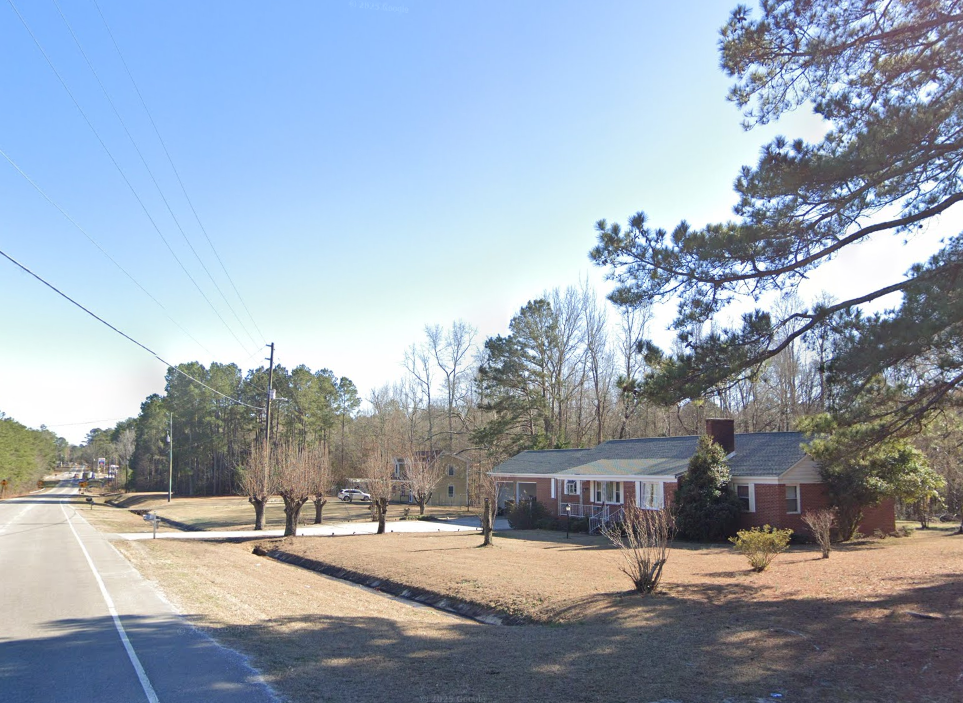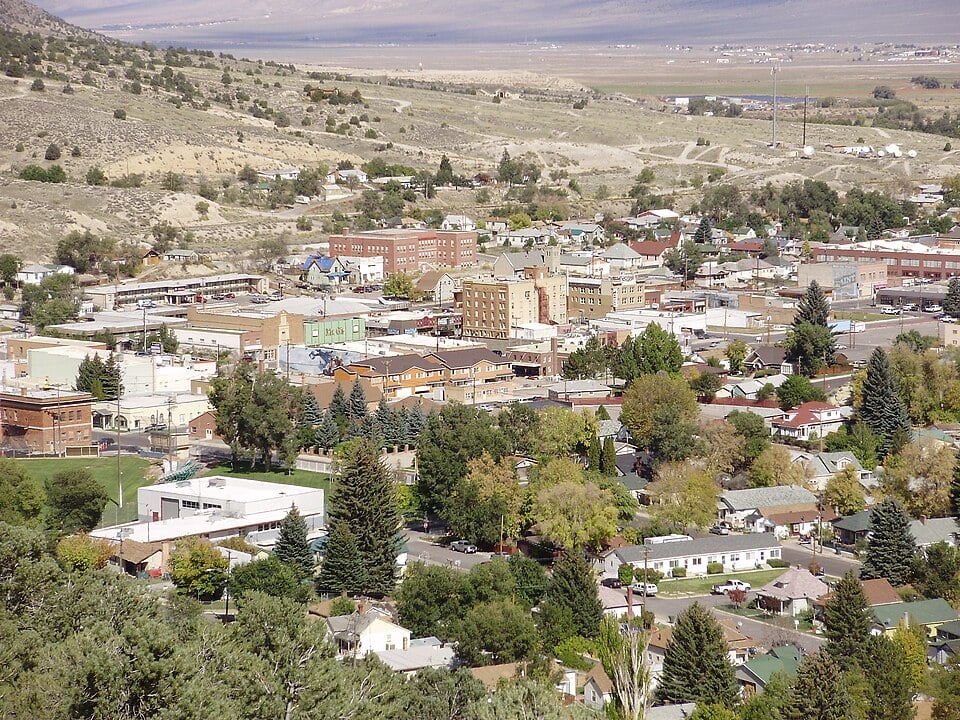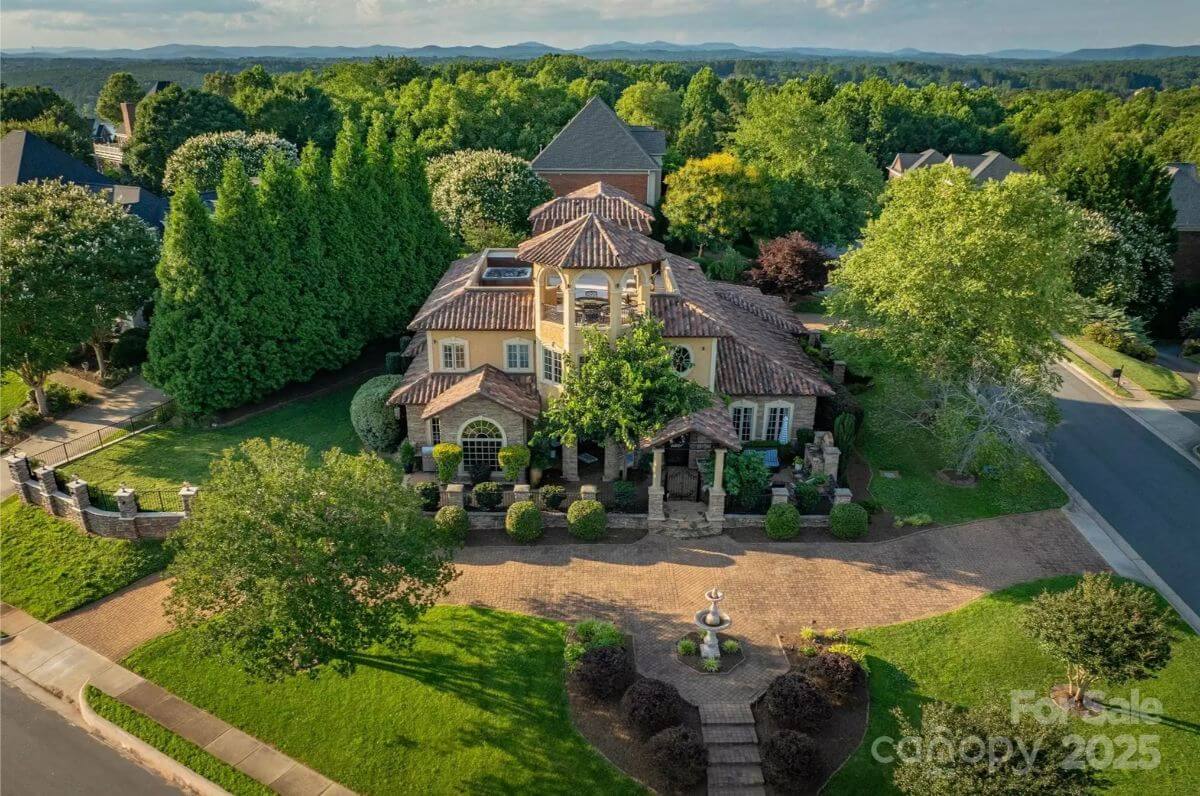
Southeast North Carolina has its share of small towns that don’t make it into the travel brochures. They sit on the edges of pine forests, along bends in slow rivers, or at crossroads where the nearest chain store is half an hour away. These are places where main streets are short, cell service can be spotty, and most residents can tell you exactly how the town got its name.
The region’s geography does much of the heavy lifting in defining its character. The coastal plain flattens the horizon, marshes and creeks cut into farmland, and the Cape Fear River threads through it all. Summers are long and humid, winters short and mild, and the outdoors is always part of daily life—whether it’s fishing at dawn, tending backyard gardens, or walking sandy backroads.
Seclusion here doesn’t mean a lack of vitality. It means a pace of life tuned to local priorities, where the sound of a tractor at work is more common than a car alarm, and neighbors are often closer than family. Town centers might have a single café or hardware store, but they serve as hubs for conversation and decision-making.
Exploring these towns is a reminder that rural North Carolina is far from static. New faces arrive, old buildings are repurposed, and local traditions adapt without losing their roots. The landscapes are steady, the connections run deep, and life unfolds in a way that feels both grounded and distinct from the faster currents beyond the county line.
25. Teachey: The Railroad Town Time Forgot
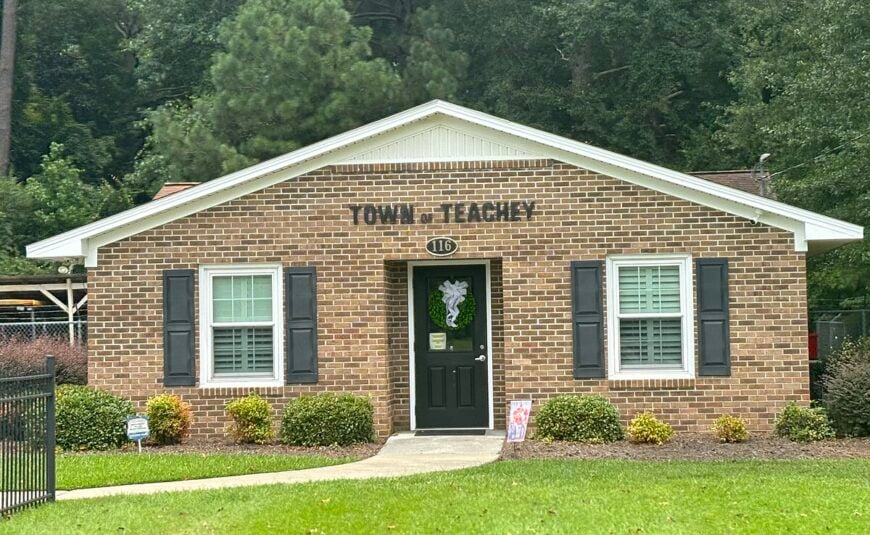
Teachey, North Carolina, is a small town tucked amid farmland and pine groves in Duplin County, far from the pull of busy city life. Its seclusion comes from quiet backroads that wind past fields and barns, with only the occasional train breaking the stillness.
The air carries the scent of freshly turned soil in spring and woodsmoke in the cooler months, reflecting a rhythm rooted in the land. Days here might be spent visiting a roadside produce stand, walking beneath the shade of old oaks, or enjoying a local festival that draws the community together.
Agriculture and small businesses form the backbone of daily life, keeping traditions steady through the seasons. It’s the kind of place where the simple sounds of wind and crickets feel like a conversation you never want to end.
Where is Teachey?
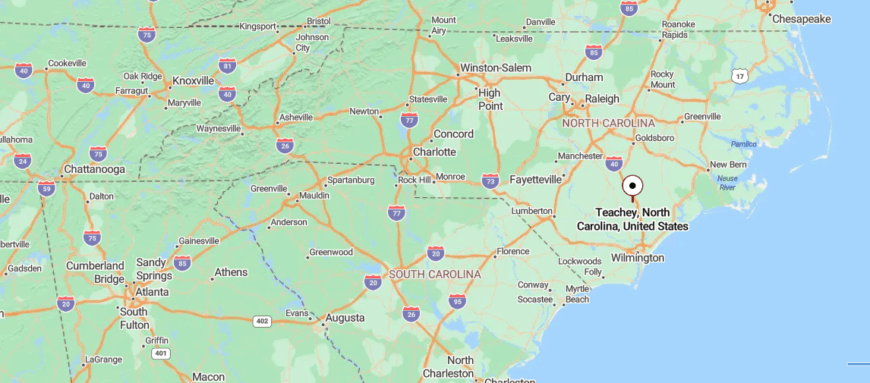
Teachey is a small town in southeastern North Carolina’s Duplin County, about 40 miles north of Wilmington. It’s reached by traveling along Interstate 40, then turning onto local roads lined with farmland and clusters of pines.
The approach is quiet and open, with few turns before you reach the heart of town. It’s close enough to the interstate for an easy trip, yet feels set apart in its own calm stretch of countryside.
24. Atkinson: Gateway to the Black River Wilderness
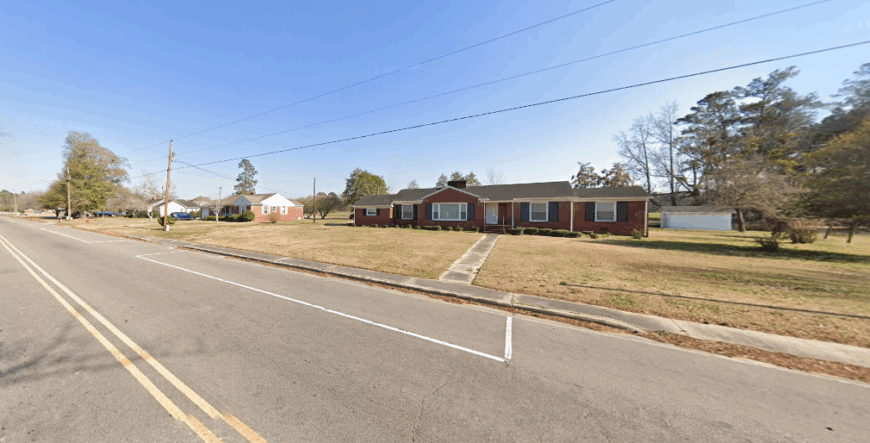
Atkinson, North Carolina, rests quietly in Pender County, surrounded by longleaf pines and farmland that stretches toward the horizon. Its seclusion comes from miles of rural roads and the absence of heavy traffic, giving it a pace that feels far removed from nearby cities.
The air is rich with the scent of pine needles warming in the sun, and evenings bring the sound of cicadas echoing through the trees. Days here might be spent exploring old churches, visiting a family-owned produce stand, casting a line into a nearby creek, or joining neighbors for a community cookout.
Logging, small farms, and local trades keep the town tied closely to its land. It’s the kind of place where the stillness feels like it’s been here for generations, unchanged and steady.
Where is Atkinson?
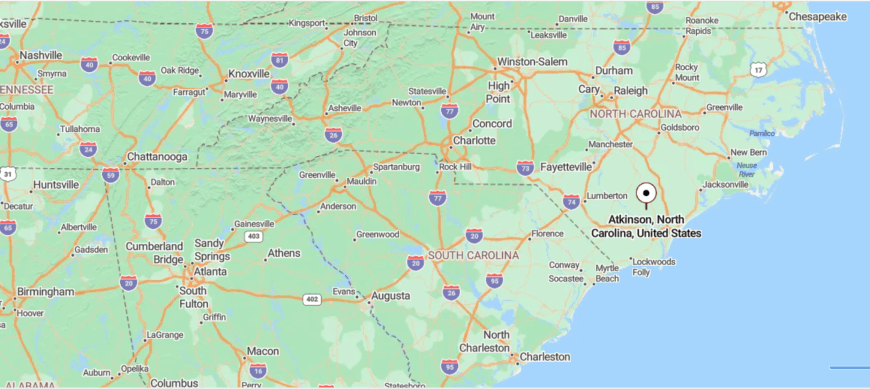
Atkinson rests in the rural heart of western Pender County, North Carolina, about a half-hour’s drive from Wilmington. The route in follows NC Highway 53, where long stretches of pine woods and farmland roll past in an easy rhythm.
As you near town, the road straightens into a quiet main street with only a handful of turns. It’s close enough for a day’s outing to the city, yet far enough to feel like you’ve stepped into a slower, more settled pace of life.
23. Harrells: A Farming Hamlet with Wide Horizons
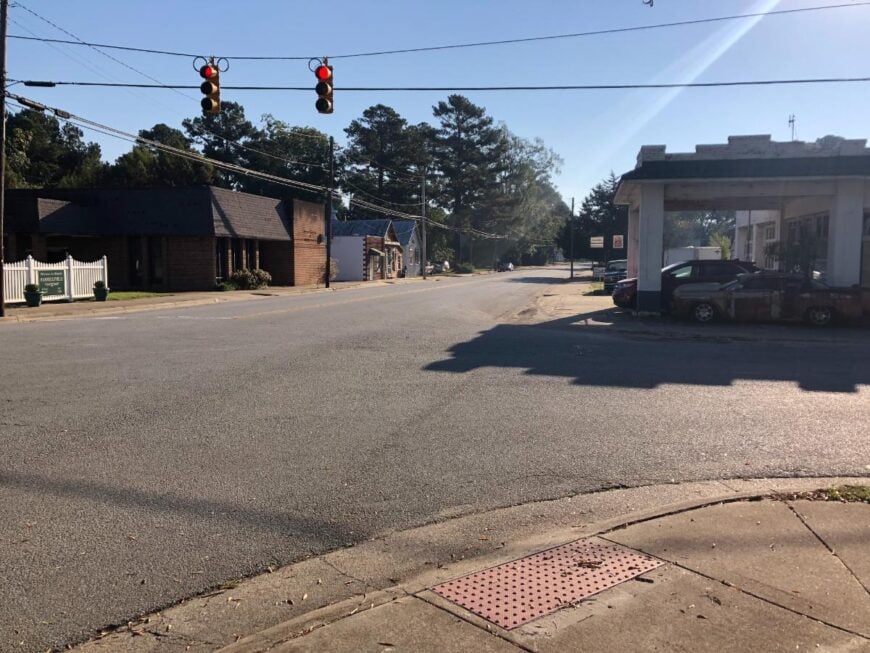
Harrells, North Carolina, sits at the quiet crossroads of Duplin, Sampson, and Bladen counties, surrounded by wide fields and stretches of pine forest. Its sense of seclusion comes from the miles of country roads that wind past barns and pastures, with no rush of city traffic to break the calm.
The air carries the scent of freshly cut hay in summer and woodsmoke in the cooler months, marking the slow turn of the seasons. Days here might be spent visiting a roadside produce stand, fishing in a farm pond, attending a small church gathering, or driving scenic backroads under the shade of old oaks.
Agriculture remains the heart of the local economy, with generations working the same land. It’s the kind of place where life moves to the rhythm of the earth, steady and unhurried.
Where is Harrells?
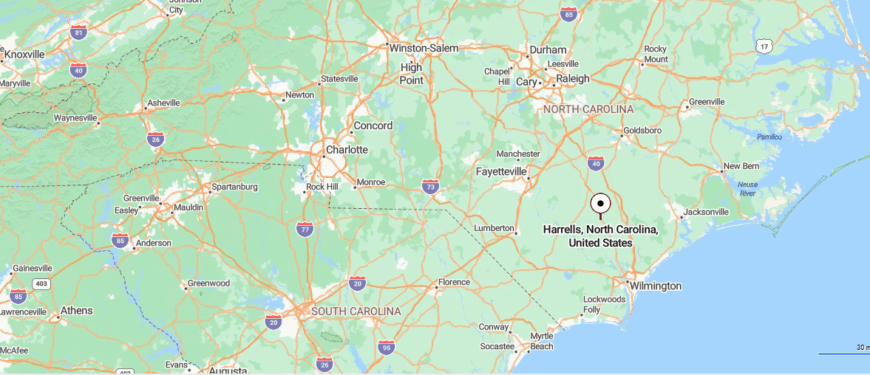
Harrells is a small community in southeastern North Carolina, straddling the border of Sampson and Duplin counties, about 40 miles north of Wilmington. You reach it by following NC Highway 41, where the drive moves past fields, woodlands, and stretches of open sky.
As the road narrows into town, clusters of homes and small businesses appear between wide swaths of farmland. It’s an easy trip from larger towns, yet it holds the quiet ease of a place rooted in the countryside.
22. Bolton: Where Forest Meets Small-Town Life
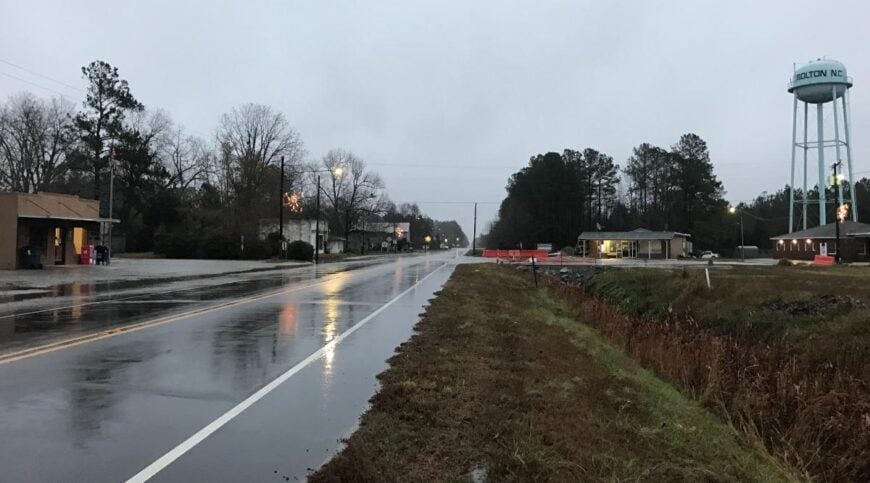
Bolton, North Carolina, sits in the shadow of towering pines, just a short drive from the vast waters of Lake Waccamaw, yet it feels a world apart. Its quiet comes from narrow sand roads and the thick stands of forest that muffle the outside world.
On summer mornings, the air is warm and still, broken only by the splash of a fish or the rustle of a deer in the brush. A day might be spent paddling through the lake’s cypress-lined edges, spotting rare wildlife, or stopping at a roadside stand for fresh watermelon.
Work here often follows the land and water, from small-scale forestry to guiding on the lake. It’s the kind of place where nature feels close enough to lean in and tell its own stories.
Where is Bolton?
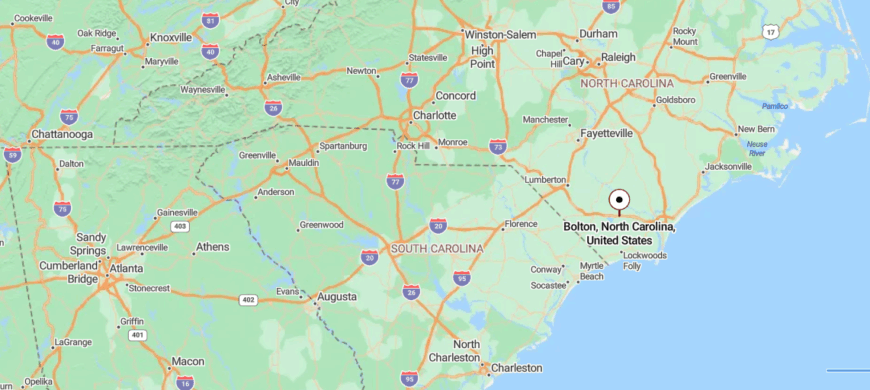
Bolton sits in Columbus County, North Carolina, about 25 miles west of Wilmington and just north of Lake Waccamaw. It’s reached by traveling along U.S. Route 74/76, then turning onto smaller local roads lined with pine forest and open fields.
The approach is simple and direct, with the landscape staying mostly rural until you reach the heart of town. It’s close enough to the highway for easy access, yet feels surrounded by the stillness of the Carolina countryside.
21. Evergreen: A Hidden Crossroads in Columbus County

Evergreen, North Carolina, is a quiet crossroads community surrounded by open farmland and patches of deep pine woods in Columbus County. Its seclusion comes from miles of two-lane roads that wind through fields and forest, far from the hum of busy highways.
Mornings often bring a low mist over the pastures, and evenings settle in with the steady chorus of crickets. Days here might be spent tending a family garden, fishing in a shaded pond, visiting a neighbor’s produce stand, or taking a slow drive beneath the canopy of country backroads.
Many locals work in agriculture, forestry, or small trades that keep the community self-reliant. It’s the kind of place where the pace is set by the sun, and time feels content to linger.
Where is Evergreen?
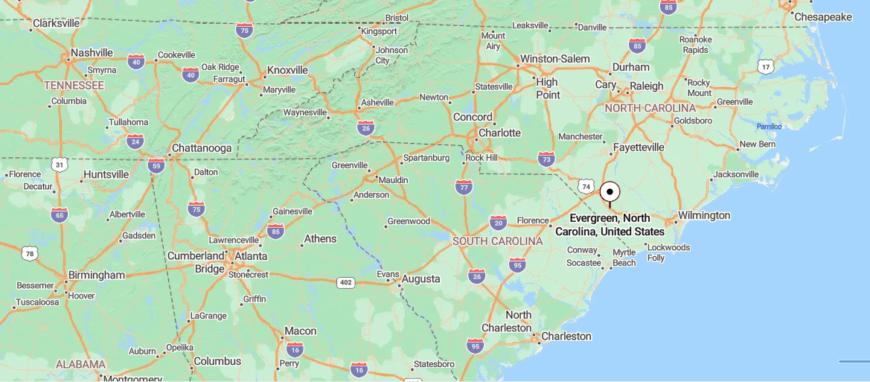
Evergreen is a rural community in western Columbus County, North Carolina, about 20 miles west of Whiteville. It’s reached by way of U.S. Route 74/76, then onto quiet two-lane roads bordered by farmland and stretches of pine forest.
The drive is open and unhurried, with long views over fields broken only by the occasional farmhouse. It’s close to the main highway, yet feels set deep in the calm of the countryside.
20. Roseboro: The Quiet Side of Sampson County

Roseboro, North Carolina, sits along a quiet stretch of Sampson County, where brick storefronts and tree-lined streets give it a timeless, small-town feel. Its sense of seclusion comes from being surrounded by farmland and backroads, with the nearest city far enough away to leave the air still and unhurried.
The mornings smell of fresh biscuits from the local café, and afternoons often carry the distant hum of a tractor working in the fields. Visitors might stroll through the historic downtown, fish at nearby lakes, join in a seasonal festival, or browse the stalls at a farmers market.
The town’s economy is rooted in agriculture, small businesses, and a strong tradition of community gatherings. It’s the kind of place where neighbors greet you by name, and the days seem to pass at just the right speed.
Where is Roseboro?

Roseboro is located in western Sampson County, North Carolina, about 20 miles east of Fayetteville. It’s reached by following NC Highway 24, where the road passes through farmland, small crossroads, and pockets of pine woodland.
As you enter town, the pace slows along a main street lined with local shops and neighborhoods. It’s within easy reach of larger cities, yet carries the unhurried feel of a small rural community.
19. Bladenboro: A Town Surrounded by Fields and Forests

Bladenboro, North Carolina, rests in the heart of Bladen County, where broad fields and pine forests stretch for miles in every direction. Its seclusion comes from being far from major interstates, with quiet roads that weave past farms, swamps, and small ponds.
Mornings often bring fog that drifts low over the land, and evenings settle in with the sound of frogs and crickets carrying through the warm air. A day here might be spent paddling on the nearby Lumber River, walking shaded nature trails, visiting a local diner, or joining in a town festival that draws the whole community.
Agriculture and small industries keep the town anchored to its surroundings and traditions. It’s the kind of place where the landscape itself feels like part of the family, constant and familiar.
Where is Bladenboro?
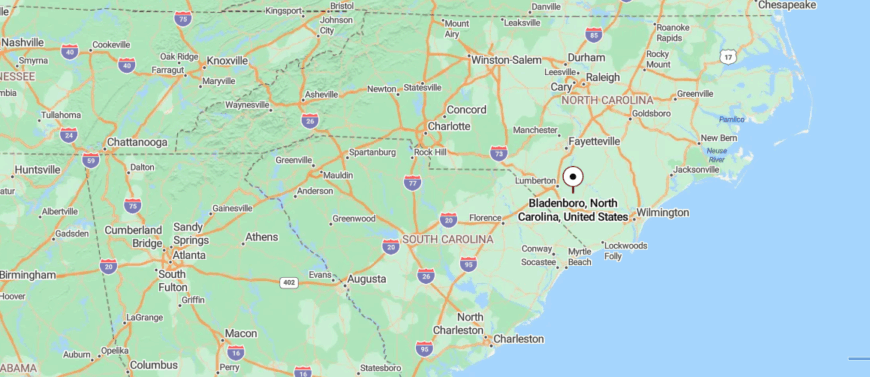
Bladenboro sits in the southwestern part of Bladen County, North Carolina, about 20 miles west of Elizabethtown. It’s reached by following NC Highway 211, a route that winds through farmland, open fields, and stands of pine before easing into town.
The approach is calm and spacious, with the road stretching straight ahead under wide Carolina skies. It’s close enough to connect with nearby hubs, yet feels firmly rooted in its own quiet, rural setting.
18. White Oak: Life Along a Quiet River
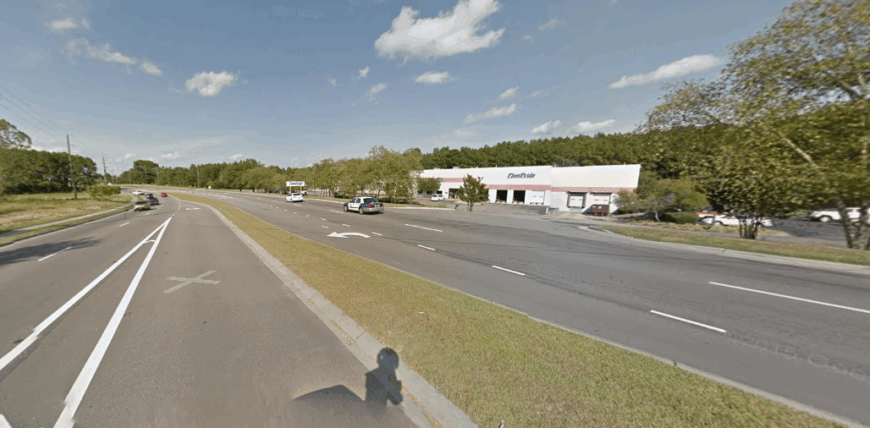
White Oak, North Carolina, lies tucked along the banks of the Cape Fear River, surrounded by stretches of farmland, pine woods, and quiet backroads. Its seclusion comes from the distance to larger towns and the way the river and forests create a natural boundary around it.
The air is filled with the scent of pine and the soft murmur of water moving downstream. Days here might be spent casting a line from the riverbank, exploring nearby nature trails, visiting a small country store, or gathering with neighbors for a weekend cookout.
Many residents work in agriculture, forestry, or trades tied to the land and water. It’s the kind of place where the calm feels as steady as the river’s flow.
Where is White Oak?

White Oak is a small community in Bladen County, North Carolina, about 25 miles northwest of Wilmington and near the Cape Fear River. It’s reached by traveling along NC Highway 87, where the drive passes pine forests, farmland, and long open stretches of road.
As you arrive, houses and churches appear among the trees, marking the heart of the community. It’s close to major routes, yet feels set apart in a peaceful corner of the countryside.
17. Garland: A Sleepy Agricultural Hub
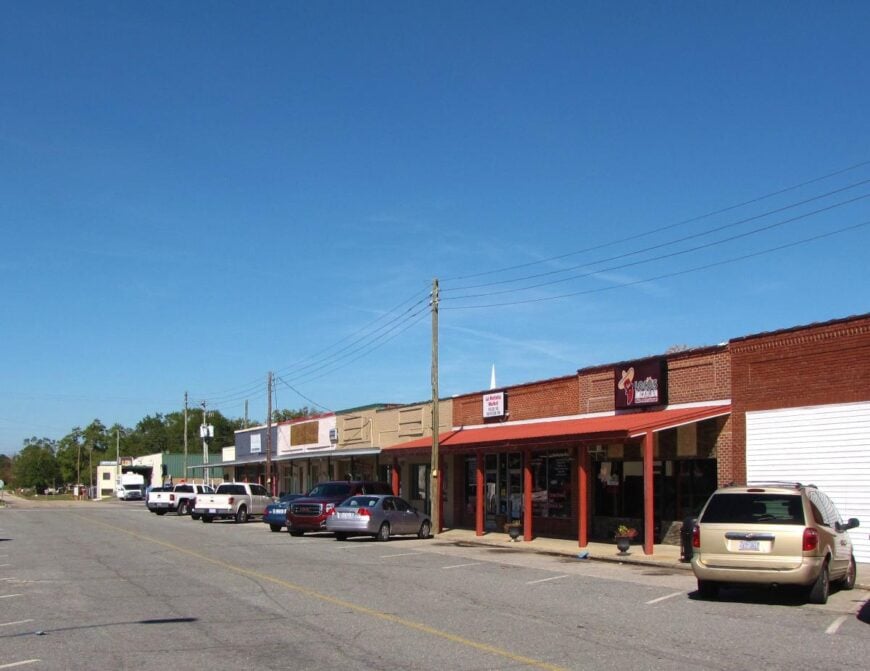
Garland, North Carolina, is a small town tucked into the quiet backroads of Sampson County, where open farmland meets clusters of towering pines. Its sense of seclusion comes from being far from bustling highways, with a downtown that feels unchanged by time.
The mornings carry the scent of fresh bread from the local bakery, and afternoons move at the slow rhythm of neighbors stopping to chat on shaded porches. Visitors might browse the historic storefronts, fish in nearby ponds, take a scenic drive through the countryside, or join in a community event at the town square.
Poultry farming, small businesses, and local trades help sustain the area’s way of life. It’s the kind of place where the welcome feels as enduring as the landscape that surrounds it.
Where is Garland?
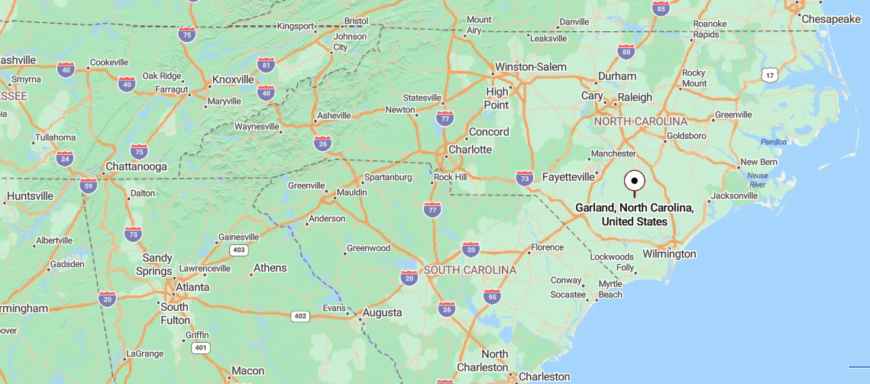
Garland is located in southern Sampson County, North Carolina, about 35 miles north of Wilmington. It’s reached by following NC Highway 701, where the drive moves past farmland, pine groves, and stretches of open sky.
Entering town, you’ll find a small main street lined with local shops and quiet neighborhoods. It’s easy to reach from nearby cities, yet holds the slower rhythm of a rural Carolina town.
16. Dublin: The “Peanut Capital” of Bladen County
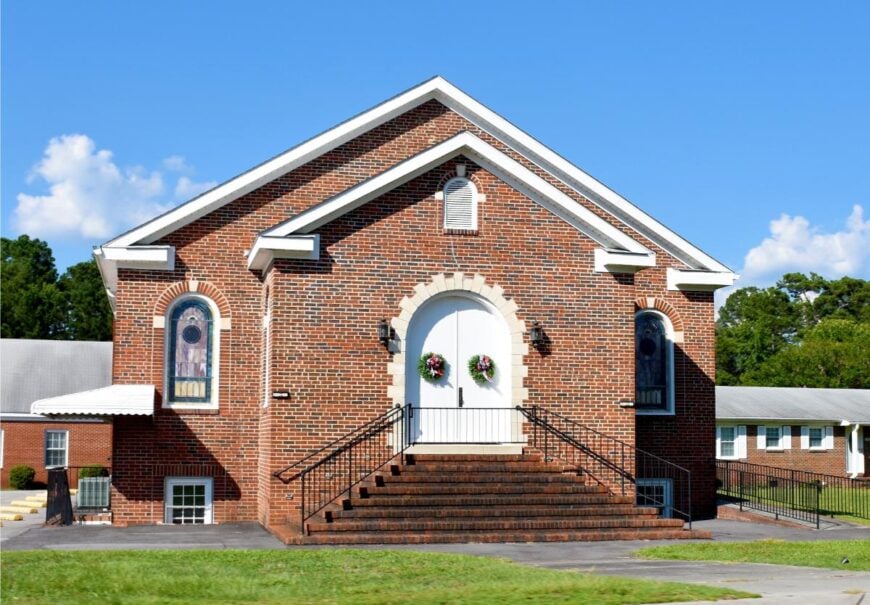
Dublin, North Carolina, rests in the open spaces of Bladen County, surrounded by fields that glow gold in the summer sun and forests that stand quiet in the distance. Its seclusion comes from long stretches of rural road that keep it apart from busier towns, letting the days unfold without hurry.
The air often carries the sweet scent of ripe berries in season, a nod to the town’s connection to the blueberry farms that dot the countryside. Visitors might explore the nearby state park, paddle along the Cape Fear River, attend the annual blueberry festival, or stop at a roadside stand for fresh produce.
Farming anchors much of the local economy, blending tradition with the changing seasons. It’s the kind of place where each day feels tied to the land, steady and familiar.
Where is Dublin?
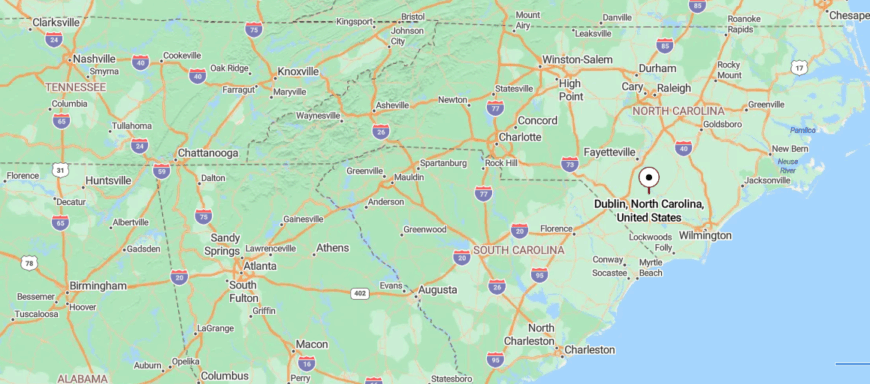
Dublin is a small town in Bladen County, North Carolina, about 10 miles west of Elizabethtown. It’s reached by traveling along NC Highway 87, with the drive passing fields, pine stands, and open stretches of countryside.
As you arrive, the road eases into a few clustered streets at the heart of town. It’s close to larger hubs, yet feels settled in its own quiet patch of rural Carolina land.
15. Cerro Gordo: A Peaceful Edge of Columbus County
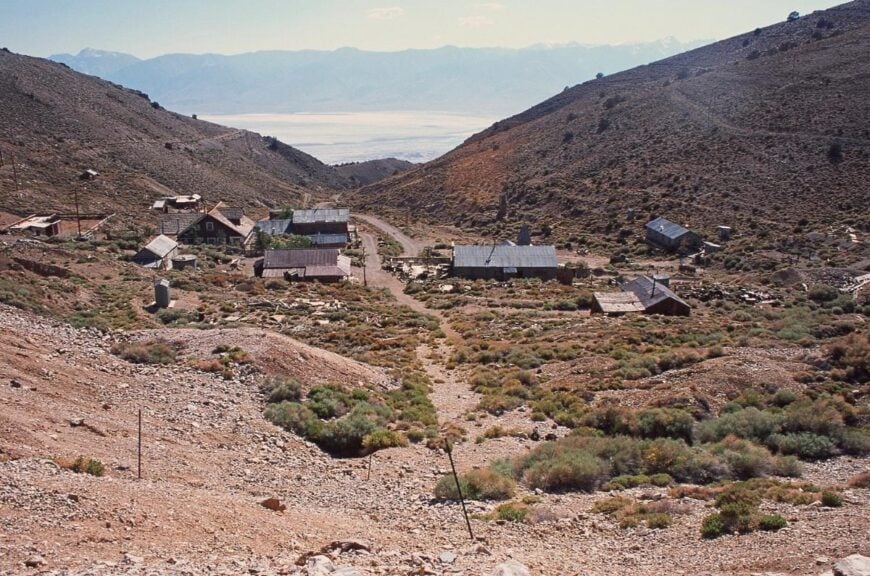
Cerro Gordo, North Carolina, sits quietly in the flatlands near the South Carolina border, where open fields meet stretches of pine and cypress. Its tucked-away feel comes from the long drive along rural roads, with the nearest bustle far beyond the horizon.
In the early morning, mist clings low over the fields, and the faint sound of a train whistle drifts through the air. Visitors might explore the nearby Lumber River, stop at a country store for sweet tea, or wander trails shaded by moss-draped trees.
Local life leans on farming, small-scale forestry, and the steady rhythm of seasonal work. It’s the kind of place where the days feel unbroken, as if the land itself holds time still.
Where is Cerro Gordo?
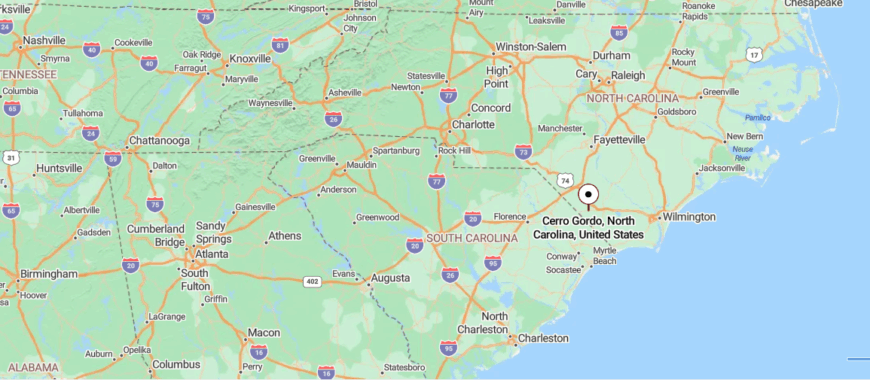
Cerro Gordo is a small town in western Columbus County, North Carolina, about 15 miles west of Whiteville and near the South Carolina border. It’s reached by way of U.S. Route 76, where the drive passes farmland, open fields, and long stretches of pine forest.
As you approach, a few streets and homes cluster around the main road before giving way again to open countryside. It’s close enough to connect with neighboring towns, yet feels tucked into its own quiet corner of the state.
14. Clarkton: The Small Town with Big Fields

Clarkton, North Carolina, rests in the heart of Bladen County, surrounded by wide stretches of farmland and longleaf pine groves. Its seclusion comes from the miles of two-lane roads that weave through fields and small crossroads before reaching town.
The mornings are quiet except for the distant call of a dove, and summer afternoons often carry the scent of ripening blueberries from nearby farms. A visit might include stopping at a roadside produce stand, fishing in a shaded pond, attending a local festival, or taking a slow drive through the countryside.
Agriculture—especially blueberry farming—anchors the community and shapes its seasonal rhythm. It’s the kind of place where each day feels rooted in the land and the people who tend it.
Where is Clarkton?

Clarkton sits in southern Bladen County, North Carolina, about 12 miles south of Elizabethtown along U.S. Route 701. The drive into town passes fields, pecan groves, and stretches of pine forest before narrowing to a small main street.
Houses, churches, and a few local shops cluster near the center, surrounded by open countryside. It’s an easy trip from nearby towns, yet carries the unhurried pace of a place rooted in the rural South.
13. Boardman: Life by the Lumber River
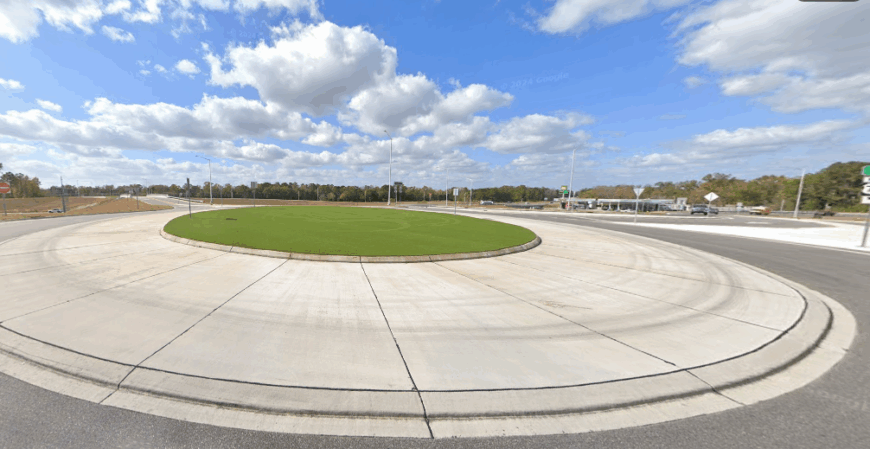
Boardman, North Carolina, sits quietly along the edge of the Lumber River, its few streets framed by farmland and dense stands of pine. The town feels tucked away thanks to the miles of winding backroads and the absence of heavy traffic.
Early mornings often bring a low fog drifting over the fields, while warm afternoons are marked by the hum of cicadas in the trees. Visitors might paddle the slow-moving river, explore forest paths, share stories at a local gathering spot, or watch the sun sink behind the tree line.
Work here follows the rhythms of agriculture, forestry, and small-town trade. It’s the kind of place where the landscape sets the tone, unhurried and constant.
Where is Boardman?
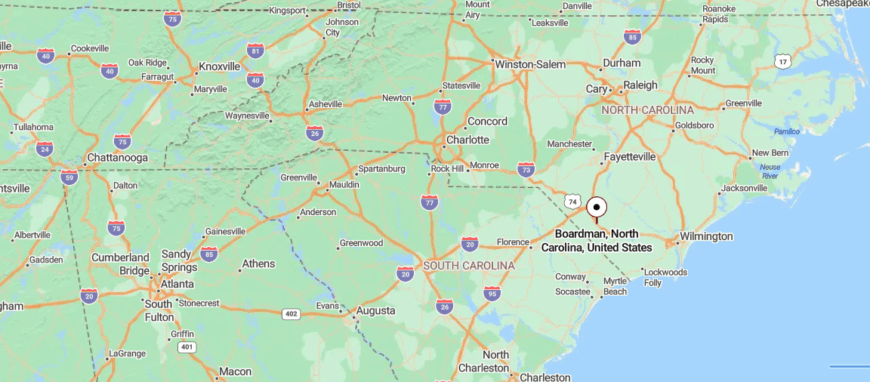
Boardman is a small community in western Columbus County, North Carolina, about 20 miles west of Whiteville. It’s reached by traveling along U.S. Route 74/76, where the road runs past long stretches of farmland and pine woods.
As you near town, a few quiet streets branch off from the main highway, surrounded by open fields. It’s close to the roadway for easy travel, yet feels set apart in its own quiet rural setting.
12. St. Pauls: A Town Tucked Between Fields and Pines
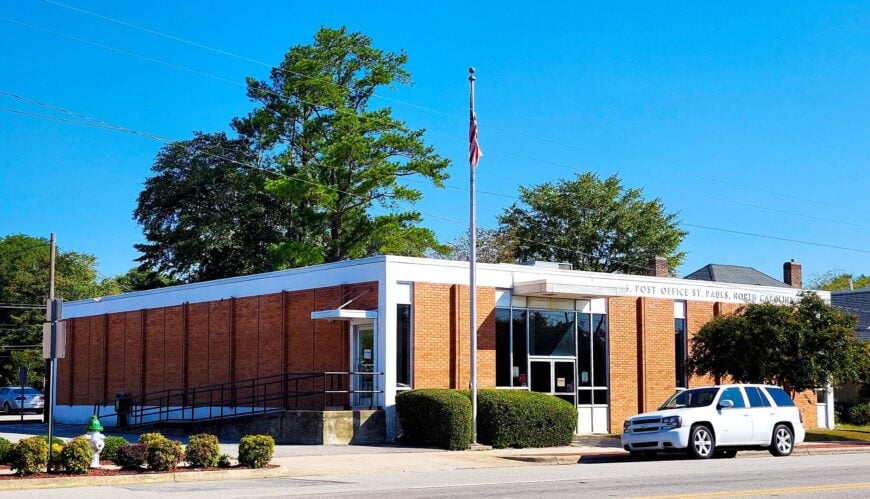
St. Pauls, North Carolina, sits at the edge of Robeson County, where fields meet pine woods and the horizon feels wide and open. Its sense of seclusion comes from being surrounded by rural roads that stretch for miles, with the bustle of larger towns kept at a distance.
The mornings are often cool and quiet, broken only by the sound of a passing freight train, while evenings bring soft light over the rooftops of its historic downtown. A visit might include browsing small shops, fishing at a nearby pond, walking shaded neighborhood streets, or attending a local festival on the town square.
Textiles, agriculture, and small businesses have long anchored its economy, shaping both its pace and traditions. It’s the kind of place where the air feels familiar, and each day unfolds with steady, unhurried rhythm.
Where is St. Pauls?
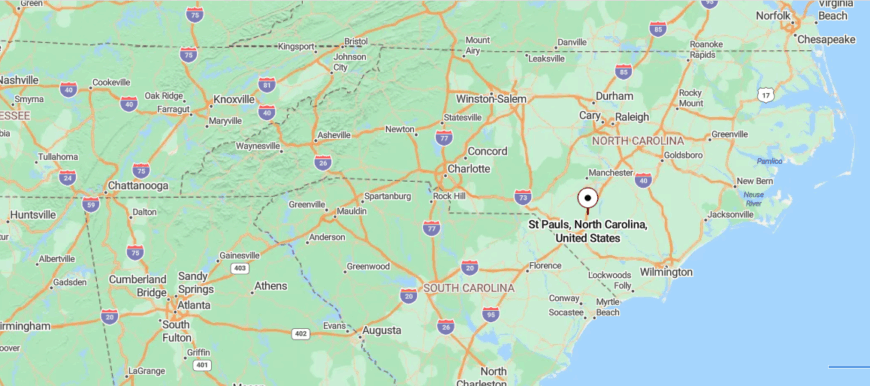
St. Pauls is located in northern Robeson County, North Carolina, about 15 miles south of Fayetteville. It’s reached by Interstate 95, with the exit leading into a small town surrounded by farmland and stands of pine.
The approach is quick and direct, yet slows as you enter streets lined with neighborhoods and local businesses. It’s close to major routes, but still holds the easy pace of a rural Carolina community.
11. Tabor City: A Southern Gateway with a Rural Soul
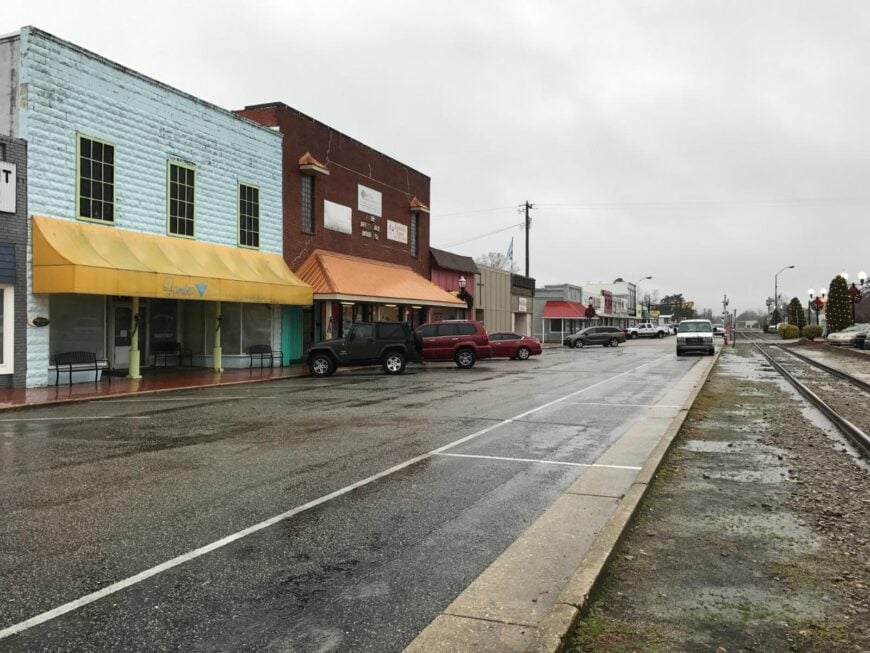
Tabor City, North Carolina, rests near the South Carolina border, surrounded by tobacco fields, pine stands, and sandy backroads that keep it apart from faster-moving places. Its seclusion comes from the long drive through open countryside, where the scent of tilled earth and warm pine fills the air.
Mornings often start with the golden light spilling over farmland, and evenings settle in with the hum of crickets and frogs. Visitors might explore the small downtown lined with historic brick buildings, attend the annual yam festival, fish in a quiet pond, or wander rural trails.
Farming and small-town commerce remain the backbone of daily life, blending tradition with the changing seasons. It’s the kind of place where the horizon feels endless and the pace invites you to stay awhile.
Where is Tabor City?

Tabor City is in southern Columbus County, North Carolina, directly on the South Carolina border and about 25 miles north of Myrtle Beach. It’s reached via U.S. Route 701, with the drive carrying you past wide fields, pine stands, and stretches of open farmland.
Nearing town, the landscape gathers into a compact downtown lined with local businesses and neighborhood streets. It’s close to the coast, yet feels grounded in its own quiet, inland pace.
10. Council: Serenity in Bladen County’s Woodlands

With a population of just a few hundred residents, Council is a tiny community nestled deep within Bladen County’s dense woodlands. I find that the extensive forests surrounding Council provide a natural barrier, making it a haven for those seeking peace and privacy.
The main industries here revolve around agriculture and forestry, with many locals engaged in farming and timber work. Outdoor enthusiasts can enjoy activities like hiking, bird watching, and fishing in nearby lakes and streams.
What truly makes Council secluded is its minimal development and expansive lot sizes, allowing residents ample space to enjoy the tranquility of rural life without close neighbors.
Where is Council?

Located in the heart of Bladen County, Council sits approximately 40 miles west of Wilmington and miles away from major highways. Its remoteness is accentuated by the winding country roads and the vast expanses of woodland that seem to stretch endlessly.
To get there, I usually take NC Highway 87 and then venture onto smaller local roads that lead into the heart of the community. The journey itself feels like a step back in time, away from the noise of urban centers, and it’s this isolation that gives Council its serene charm.
9. Winnabow’s Hidden Homesteads

Winnabow is a small, unincorporated community with a population of around 2,000 people dispersed over a wide area. Its rural charm is highlighted by the large properties and family-owned farms that dot the landscape.
I enjoy visiting the local farmers’ markets and exploring the historical sites like the Brunswick Town Historic District nearby. The main industries here include agriculture and some light manufacturing.
What makes Winnabow ideal for secluded living is its low-density housing and significant distance from commercial zones, providing residents with a quiet and private lifestyle away from the bustle of neighboring towns.
Where is Winnabow?

Situated in Brunswick County, Winnabow lies just south of Leland and about 12 miles from Wilmington. Despite its proximity to these larger towns, Winnabow retains a secluded feel due to its rural roads and lack of urban development.
To get there, I take US Highway 17 and then branch off onto peaceful country roads that wind through fields and forests. The community’s hidden homesteads are tucked away, making it a perfect location for those who want the convenience of nearby cities but prefer a quiet place to call home.
8. Hallsboro: The Secluded Lakeside Community

Hallsboro is a quaint town with a population of approximately 500 residents. Nestled near the shores of Lake Waccamaw, it offers a tranquil setting for those who love the water. I often spend time here fishing, boating, and enjoying the serene beauty of the lake’s natural surroundings.
The main industries include small-scale agriculture and tourism centered around outdoor activities. Hallsboro’s low population density and the vast natural areas surrounding it provide a secluded lifestyle that is hard to find elsewhere.
The quiet streets and friendly, tight-knit community make it a delightful escape from the noise of larger towns.
Where is Hallsboro?

Located in Columbus County, Hallsboro is about 50 miles west of Wilmington and 15 miles east of Whiteville. Its seclusion comes from its position near the lake and the absence of major highways passing through the town.
To reach Hallsboro, I usually take NC Highway 74/76 and then venture onto smaller local roads that lead to this lakeside haven. The journey offers scenic views of North Carolina’s countryside, enhancing the feeling of retreat as you approach this peaceful community.
7. Riegelwood’s Riverside Seclusion

Riegelwood is a small community with around 600 residents, located along the Cape Fear River. I love the ample opportunities for fishing, kayaking, and exploring the riverside trails here.
The main industries are centered around the paper mill and timber, with some agriculture as well. The town’s generous lot sizes and surrounding undeveloped land provide natural seclusion for residents.
What makes Riegelwood particularly appealing is the tranquility of riverside living coupled with the friendliness of a close-knit community.
Where is Riegelwood?

Found in Columbus County, Riegelwood is about 20 miles west of Wilmington. Its secluded nature is enhanced by the extensive forests and the river that envelop the area.
Getting there involves taking NC Highway 87 and then turning onto smaller roads that lead into the heart of the community. The lack of urban development and the serene river views make Riegelwood feel like a world apart, offering a peaceful retreat from the demands of city life.
6. Delco: Peaceful Living Off the Beaten Path

With a population of around 350, Delco is a small, unincorporated community where life moves at a slower pace. The area is characterized by its sprawling farmlands and pine forests, and I often find solace in the quiet backroads perfect for long drives or bike rides.
The main industries are agriculture and some small businesses. Delco’s low housing density and large properties make it an ideal spot for those seeking solitude. Its location away from major highways ensures that the sounds of traffic are replaced by the whispers of the wind through the trees.
Where is Delco?
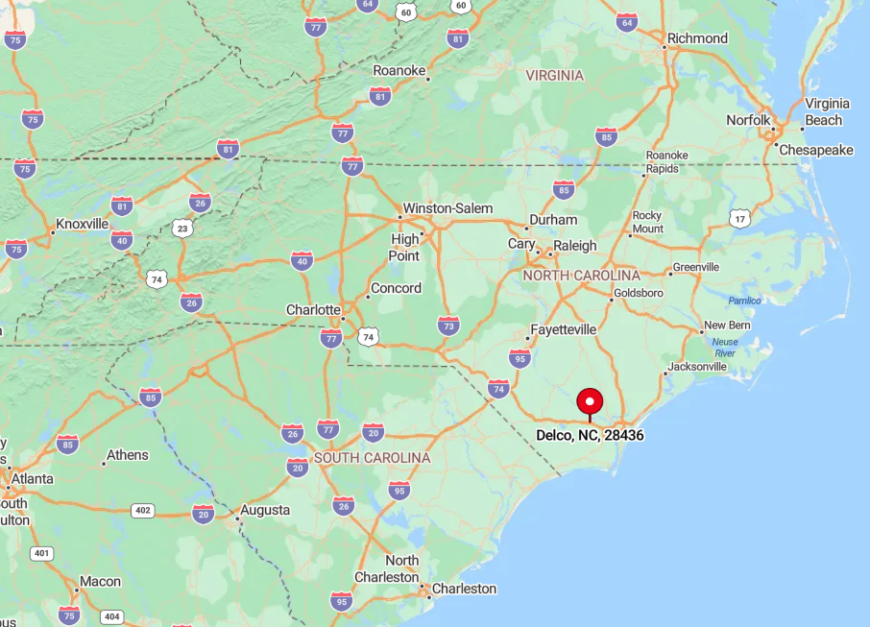
Delco is situated in Columbus County, about 25 miles west of Wilmington. It’s off the beaten path, with the main access via NC Highway 74/76, but even then, you’ll need to navigate a network of rural roads to reach the heart of Delco.
This remoteness contributes to its peaceful atmosphere. I appreciate how the journey to Delco itself is calming, passing through open fields and forests that signal you’re leaving the hectic world behind.
5. Ivanhoe’s Rustic Retreat

Ivanhoe is a sparsely populated area with fewer than 300 residents. Known for its expansive acreage and natural barriers like the Black River, it’s a place where you can truly immerse yourself in nature.
I enjoy canoeing on the river and hiking through the untouched woodlands. The local economy revolves around agriculture, particularly corn and soybean farming.
Ivanhoe’s seclusion is amplified by its minimal development and the large distances between homes. If you’re looking for a rustic retreat where neighbors are few and far between, this is the spot.
Where is Ivanhoe?

Located in Sampson County, Ivanhoe is about 40 miles northwest of Wilmington. Its secluded nature is due to its distance from major towns and the natural barriers that surround it.
To get there, I usually take NC Highway 210, navigating through scenic rural landscapes. The journey underscores the isolation, as cell service can be spotty, and you’ll likely see more wildlife than people. This remoteness is what gives Ivanhoe its undeniable charm.
4. Kelly’s Unspoiled Natural Beauty
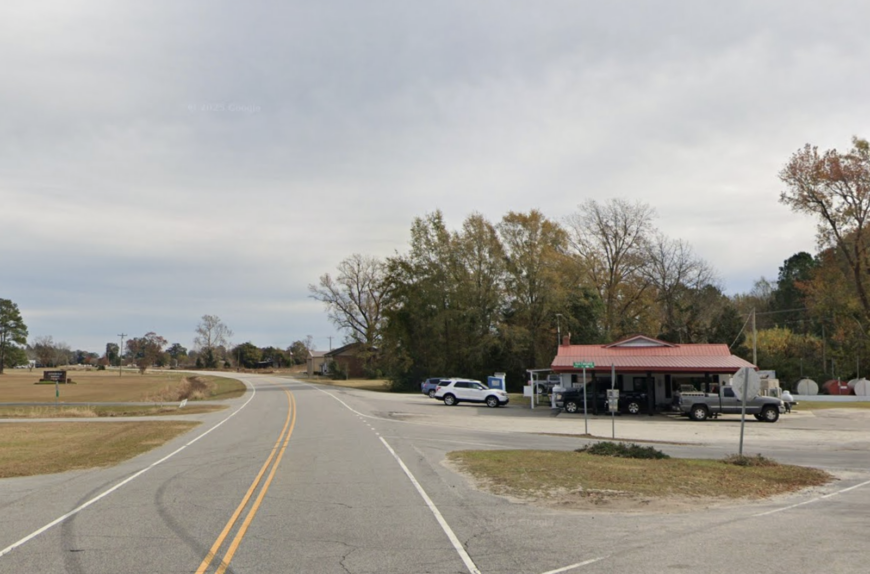
Kelly is a tiny community with a population of around 550, surrounded by untouched woodlands and wetlands. I find its serenity perfect for activities like bird watching, fishing, and enjoying the simple pleasures of outdoor life.
There are few industries here, with some residents involved in farming and others commuting to nearby towns for work. The large lots and minimal development mean that homes are often secluded within dense foliage, providing ultimate privacy.
Kelly’s natural beauty and quiet atmosphere make it a hidden gem for those seeking solitude.
Where is Kelly?

Situated in Bladen County, Kelly is about 45 miles northwest of Wilmington. Its location near the Cape Fear River and vast tracts of protected land enhances its seclusion.
Reaching Kelly involves taking NC Highway 53 and then venturing onto smaller roads that weave through forests and wetlands. The journey can feel like an adventure in itself, bringing you closer to nature with every mile. This remoteness is a key part of what makes Kelly so special to me.
3. Nakina: The Quiet Countryside Haven

Nakina is a rural community with approximately 1,000 residents spread out over a vast agricultural landscape. It’s a place where the countryside stretches as far as the eye can see, and I often enjoy the peaceful drives along its country roads.
Farming is the main industry here, with tobacco, corn, and soybeans being common crops. The absence of urban development and the wide-open spaces create a sense of tranquility that’s hard to find elsewhere. Nakina embodies peaceful rural living, far from the noise and congestion of major urban areas.
Where is Nakina?

Nakina is located in Columbus County, about 60 miles west of Wilmington and near the South Carolina border. Its secluded nature is due in part to its distance from major highways and cities.
To get there, I take US Highway 76 and then navigate smaller rural roads that lead into the heart of the community. The journey takes you through picturesque farmland and forests, highlighting the area’s natural beauty and reinforcing the feeling of being tucked away from the rest of the world.
2. Solitude in Ash’s Pine Forests

Ash is a small community with around 4,000 residents spread across expansive rural areas. Nestled among dense pine forests, Ash provides privacy and a strong connection to nature.
I find the expansive acre-plus properties perfect for those who value space and tranquility. The main industries include agriculture and some forestry work. The remote location and the vast stretches of unspoiled land make Ash an ideal place for those seeking to escape the city bustle.
The community’s seclusion is enhanced by the natural surroundings that envelop it, providing a serene backdrop for daily life.
Where is Ash?

Located in Brunswick County, Ash is about 35 miles west of Wilmington and close to the South Carolina border. Its secluded position is due to the lack of major highways and urban centers nearby.
To reach Ash, I typically take NC Highway 130, which winds through rural landscapes and forests. The journey itself reinforces the feeling of solitude, as the scenery shifts from coastal to deeply rural. This remoteness is a significant part of what makes Ash such a peaceful place to live or visit.
1. The Hidden Charm of Currie

Currie is a quiet, unincorporated community with a population of around 2,000 people scattered over a vast area. Surrounded by extensive undeveloped lands and forests, it offers large lot sizes and a sparse population density.
I particularly enjoy visiting Moores Creek National Battlefield, a historical site that adds a touch of heritage to the natural beauty. The main industries are agriculture and some light manufacturing.
Currie is miles away from urban centers, and its seclusion is palpable. The expansive properties and the enveloping woodlands make it a secluded haven for those who crave peace and privacy.
Where is Currie?

Situated in Pender County, Currie lies approximately 25 miles northwest of Wilmington. Its location away from major highways enhances its secluded atmosphere.
To get there, I usually take NC Highway 210 or NC Highway 421, driving through serene countryside and over the Black River. The absence of heavy traffic and commercial development contributes to the feeling of taking a step back to simpler times.
Currie’s hidden charm is best experienced firsthand, as the journey and the destination together offer a respite from the demands of modern life.


